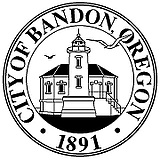The National Counterterrorism Center
(Book - Children's)
Author
Published
Broomall, Pa. : Mason Crest, [2018].
Physical Desc
80 pages : illustrations ; 24 cm.
Status
Description
Loading Description...
Also in this Series
Checking series information...
Copies
| Location | Call Number | Status |
|---|---|---|
| Dora Public Library - Junior - Nonfiction | 363.325 TOMKIES | Available |
More Details
Published
Broomall, Pa. : Mason Crest, [2018].
Format
Book - Children's
Language
English
Notes
General Note
Includes index.
Description
Following the al Qaeda terrorist attacks of September 11, 2001, the U.S. government convened a special commission to investigate the intelligence failure that allowed the attacks to happen. Known informally as the 9/11 Commission, its report concluded among other things that none of the measures adopted by the U.S. government before 9/11 disturbed or even delayed the progress of the al Qaeda plot. An important step toward addressing this failure was the formation of the National Counterterrorism Center (NCTC). Successfully combatting terrorism often comes down to the quality of the intelligence that s gathered. That s where the NCTC comes in. Established in 2002, this agency gathers intelligence 24/7, staying on the continuous lookout for potential threats. It has access to intelligence gathered by the CIA and National Security Agency as well as maintaining its own databases. Learn about this crucial new bureau and how it synchronizes operations across more than 20 government departments and agencies within the United States and many more around the world to keep people safe from terrorist attacks. PUBLISHER S NOTE: Each title in this series contains a foreword from a noted security and antiterrorism expert who has served in the FBI, Marines, and police force, color photos throughout, and back matter that includes an index, chronology, and further resource lists of books and Internet resources. Key Icons appear throughout the books in this series, encouraging library readers to build knowledge, gain awareness, explore possibilities and expand their viewpoints through our content-rich nonfiction books. Key Icons in this series are as follows: Words to Understand are shown at the front of each chapter with definitions. These words are set in boldfaced type in that chapter, so that readers can reference back to the definitions building their vocabulary and enhancing their reading comprehension. Sidebars are highlighted graphics with content rich material within that allows readers to build knowledge and broaden their perspectives by weaving together additional information to provide realistic and holistic perspectives. Text-Dependent Questions are placed at the end of each chapter. They challenge the reader s comprehension of the chapter they have just read, while sending the reader back to the text for more careful attention to the evidence presented there. Research Projects are provided at the end of each chapter as well and provide readers with suggestions for projects that encourage deeper research and analysis. Educational Videos provide links via QR codes to online video content that gives a multimedia dimension to the topics. And a Series Glossary of Key Terms is included in the back matter containing terminology used throughout the series. Words found here broaden the reader s knowledge and understanding of terms used in this field.
Reviews from GoodReads
Loading GoodReads Reviews.
Citations
APA Citation, 7th Edition (style guide)
Tomkies, K. K. (2018). The National Counterterrorism Center . Mason Crest.
Chicago / Turabian - Author Date Citation, 17th Edition (style guide)Tomkies, Kelly Kagamas. 2018. The National Counterterrorism Center. Mason Crest.
Chicago / Turabian - Humanities (Notes and Bibliography) Citation, 17th Edition (style guide)Tomkies, Kelly Kagamas. The National Counterterrorism Center Mason Crest, 2018.
MLA Citation, 9th Edition (style guide)Tomkies, Kelly Kagamas. The National Counterterrorism Center Mason Crest, 2018.
Note! Citations contain only title, author, edition, publisher, and year published. Citations should be used as a guideline and should be double checked for accuracy. Citation formats are based on standards as of August 2021.
